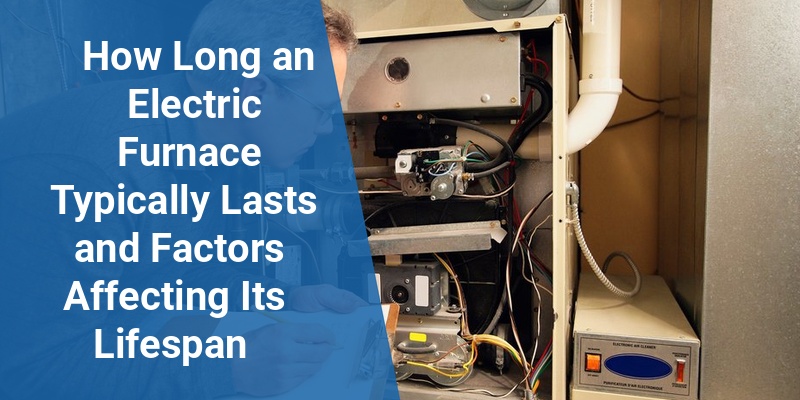Electric furnaces are a popular heating choice for many American households due to their efficiency and ease of maintenance. One of the most common questions homeowners ask is how long an electric furnace lasts and what factors influence its durability. This article explores the typical lifespan of electric furnaces, the key components that can impact longevity, maintenance tips, and signs that indicate it might be time for a replacement.
| Aspect | Details |
|---|---|
| Average Lifespan | 15 to 30 years |
| Key Factors Affecting Lifespan | Maintenance, usage frequency, installation quality |
| Common Replacement Indicators | Frequent breakdowns, rising energy bills, inconsistent heating |
| Maintenance Tips | Regular filter changes, annual professional inspection, cleaning components |
Typical Lifespan of an Electric Furnace
Electric furnaces generally last between 15 and 30 years, depending on several factors. This lifespan is longer compared to oil or gas furnaces because electric furnaces have fewer mechanical parts that wear out over time. However, the actual lifespan can vary based on usage patterns and how well the furnace is maintained.
In ideal conditions with proper maintenance, an electric furnace can efficiently provide heat for up to three decades. Conversely, neglect and heavy usage can shorten this span, leading to premature replacement.
Factors Influencing the Longevity of an Electric Furnace
Maintenance and Upkeep
One of the most important factors affecting how long an electric furnace lasts is routine maintenance. Regular filter replacements prevent dust build-up, while scheduled professional inspections help identify issues early, extending the unit’s operational life.
Quality of Installation
Proper installation by a licensed HVAC professional ensures the furnace operates efficiently and avoids undue strain on its components. Poor installation can cause airflow restrictions and electrical issues that reduce the furnace’s lifespan.
Usage Patterns
Homes in colder climates or large houses with high heating demand may cause an electric furnace to work harder and have a shorter life. Conversely, milder climates and efficient home insulation reduce furnace strain and extend longevity.
Signs It May Be Time to Replace Your Electric Furnace
- Frequent Breakdowns: Repeated repairs and part replacements signal the furnace is nearing the end of its useful life.
- Rising Energy Bills: Older furnaces lose efficiency, causing higher electricity consumption.
- Inconsistent Heating: Uneven temperatures or failure to maintain set thermostat levels indicate malfunctioning components.
- Strange Noises or Odors: Unusual sounds or smells can point to electrical issues or failing motors.
Maintenance Tips to Extend Furnace Life
Maintaining an electric furnace effectively extends its service life and saves on energy costs.
Call 888-906-9139 for Free Local HVAC Quotes – No Obligation, Just Savings!
- Replace Filters Regularly: Depending on the type, filters should be changed every 1-3 months to ensure clean airflow.
- Schedule Annual Inspections: Professional HVAC technicians can clean, lubricate, and check electrical connections to prevent breakdowns.
- Clean Surrounding Areas: Keeping the furnace area free of dust and debris prevents airflow obstruction.
- Monitor Thermostat Settings: Avoid extreme temperature settings to reduce unnecessary strain on the furnace.
Comparing Electric Furnace Lifespan to Other Heating Systems
| Heating System | Average Lifespan | Maintenance Needs | Efficiency |
|---|---|---|---|
| Electric Furnace | 15-30 years | Low to moderate | High |
| Gas Furnace | 15-20 years | Moderate | Moderate to high |
| Oil Furnace | 15-25 years | High | Moderate |
| Heat Pump | 10-15 years | Moderate | Very high |
How to Maximize the Lifespan of Your Electric Furnace
Homeowners can implement several strategies to ensure that their electric furnace lasts as long as possible while maintaining optimal performance.
- Invest in Smart Thermostats: These devices optimize heating cycles and reduce unnecessary use, reducing wear on the furnace.
- Improve Home Insulation: Better insulation reduces the workload on the heater, extending its service life.
- Perform Seasonal Pre-Checks: Before winter, inspect the furnace system to prepare for heavy use.
- Address Repairs Promptly: Fixing small issues early prevents costly damage and premature failure.
Understanding Warranty and Replacement Costs
Electric furnaces typically come with warranties ranging from 10 to 20 years on major components, depending on the manufacturer and model. Homeowners should check warranty terms carefully to understand what is covered.
Replacement costs vary based on furnace size, brand, and installation complexity. On average, electric furnaces cost between $1,500 and $4,000, including installation. Investing in a high-quality unit and professional installation may result in lower long-term costs due to greater reliability.
